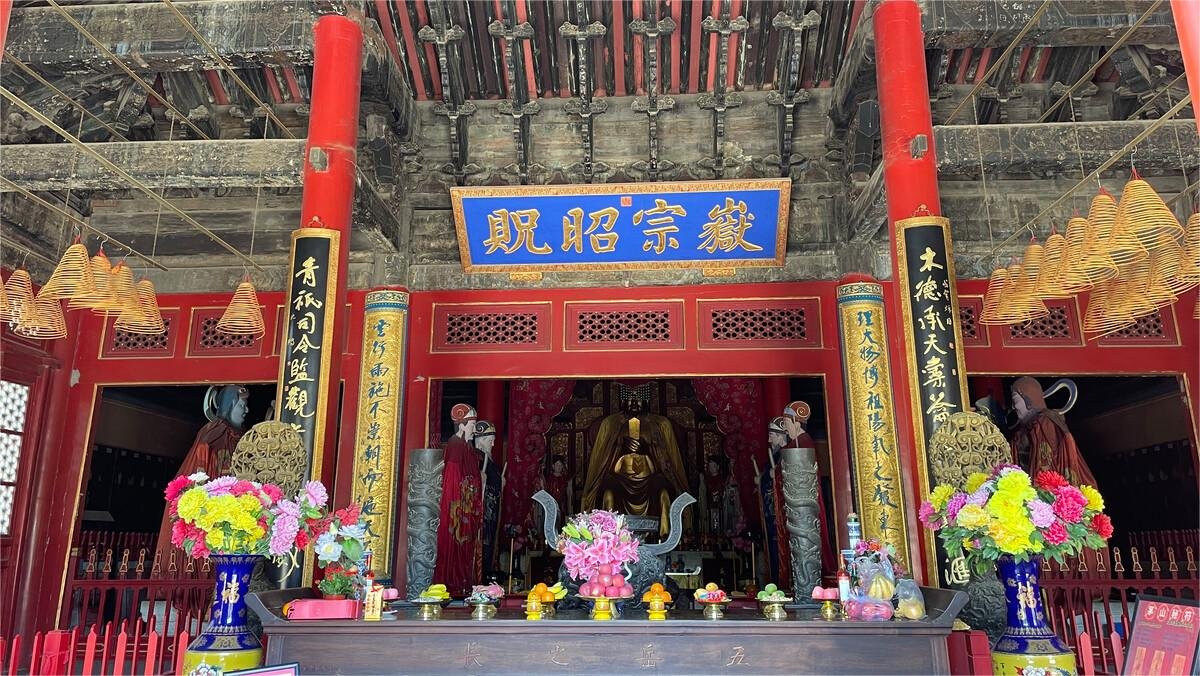Dongyue Taoist Temple (东岳庙), located in Beijing, is a historic and culturally significant religious site that holds a prominent place in Taoist tradition. With a history dating back over 600 years, the temple stands as a testament to the rich spiritual heritage of China.
Situated in the Chaoyang District, Dongyue Temple is renowned for its exquisite architecture and tranquil surroundings. Its design embodies traditional Chinese temple aesthetics, featuring magnificent gateways, ornate pavilions, and beautifully landscaped gardens. The temple complex covers a vast area, with various halls, courtyards, and altars dedicated to different deities and Taoist beliefs.
Dongyue Temple holds a special significance for Taoists as it is regarded as the headquarters of the Beijing Taoist Association. Devotees and visitors flock to the temple to pay homage to various Taoist gods, seek blessings, and participate in religious rituals and ceremonies. The temple’s serene atmosphere provides a sanctuary for spiritual reflection and meditation amidst the bustling city.
Table of Contents
- Basic Information
- Location and Transportation
- Who is Enshrined in the Temple
- Highlights of Dongyue Taoist Temple
- Vlog about Dongyue Taoist Temple
- A Brief History of Dongyue Taoist Temple
- Useful Tips Summarized from Reviews
- Other Temples in Beijing
- Explore Beijing Like A Local
Basic Information
| Estimated length of Tour | 1 – 2 hours |
| Ticket Price | 10 RMB |
| Opening Hours | 8.30 – 16.30 |
| Telephone Number | 0086-010-65510151 |
Location and Transportation
Dongyue Taoist Temple is situated in the Chaoyang District, which is a bustling area in Beijing. Its exact address is No. 141 Chaowai Street, Chaoyang District, Beijing, China. To get there, you can choose the following ways:
Bus: Take bus 75, 101, 109, 110, 139, or 615, get off at Shenlu Street Stop (神路街站), and you will be standing right at the entrance of the temple.
Subway: The nearest subway station to Dongyue Taoist Tempel is Dongdajie (东大街) on line 6. After getting out of the station from Exit A, walk about 600 meters to the west to reach the temple.









The Dongyue Temple is quiet and peaceful, with few visitors. It’s a Taoist site, and I’m not very familiar with religion. The various underworld ghosts and monsters displayed inside are quite interesting; I didn’t take any pictures as they were a bit frightening. I learned that the underworld has many departments, each with its own room.
I really liked the jewelry on display; although it’s silver and has already tarnished, it does not diminish its beauty.
The Dongyue Temple is small in size, but it offers plenty to see and appreciate, and you can even touch the jade horse! There’s no queuing or restrictions, which I find really great. The temple grounds are filled with ancient trees and numerous stone tablets. The aroma of incense wafts through the air, allowing one to calm their restless heart – it’s perfect!
The Dongyue Temple in Beijing is definitely worth a visit on a sunny day. You might need to step outside and soak up some sun after checking out a few rooms. For those who are daring, you can visit on a cloudy day. Anyway, my friend and I were a bit scared to explore it alone, but the experience was great since there weren’t many people around.